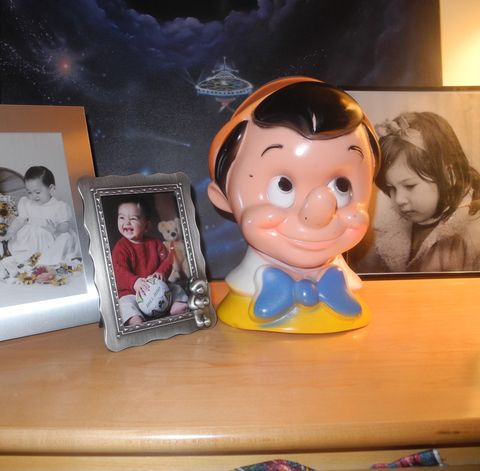For years and years, my father and mother battled about cleaning out the house. She was a keeper and he was a thrower-outer. The huge walk-in closet in our guest room housed many of my art projects from elementary school, toys my brother and I played with as children, my amazing Barbie camper van, my Crissy doll with adjustable hair length. (It is important to note — for my mother’s legacy — that while she was a keeper, she was a clean and tidy one! The closets were jammed but thoughtfully organized and the living areas impeccable. The 35-year-old baby clothes were washed every other year to prevent musty odors!)
Growing up in wartime Germany, my father became accustomed to minimalist living. He likes neat surfaces, ironed pajamas, closets from which things don’t fall on your head when you open their doors. He donated clothes every year and asked that we not buy him cards for birthdays or Father’s Day, as he considered them clutter. The yin and yang of keeper vs. thrower-outer led to some fascinating discussions about value — both emotional (as with, say, a child’s old bike) and monetary — and often some heated arguments. My mother’s emphatic stomping-off closing statement always included something like “When I am gone you can throw it all away.”
When my amazing mother did pass away 10 years ago, instead of just tossing or donating everything, my father, my brother and I made the decision to hold a garage sale. After all, we had wanted to have one for years, but it had always been vetoed by my mother. Having had garage sale envy all my life, I had somewhat glamorized the notion. I imagined a magnificently sunny day, my kids selling thirst-quenching lemonade, a steady flow of visitors and a completely empty driveway at the end of the day. Turning all our junk into cold, hard cash … lots and lots of dollar bills in our pockets.
We dug deep in our family home to uncover many garage sale items and some forgotten memories. There was the dusty orange circular birdcage my father had bought for me when I was 6 and had found a helpless, wounded bird. That bird eventually died, but the cage stayed. There was also a 20-year-old boom box that sat handsomely on my mother’s nightstand. She’d played cassettes at night and listened to the radio while she put away the laundry. We’d convinced ourselves to keep it all these years because it worked and was “vintage” and with the ever-popular idea “It could be worth a lot of money someday.” And then there was the Pinocchio bank I’d gotten at Disney World when I was 7. This bank had smiled at me when I had been banished to my room and given me money to buy treats from the ice cream truck.
These were all items of comfort. And now these were all items that served no actual purpose for us anymore. Still, it was hard to decide what got a price tag and what stayed. So I asked myself, How often will I use this? Do I need this item for the memory, or could I take a picture of it from which I could garner the same joy? When I stumbled upon something that would have made my mother remark “This could be worth money someday,” I knew it was likely a sign that I should sell it now and not “someday.”
Months after we began chiseling away at the decades of my family’s stuff, garage sale day came, and promptly at 8 a.m., the cars began to pull up. It wasn’t exactly the vision I’d imagined. It was sunny, but also sticky and humid. There were no children with a thirst-quenching lemonade stand. We did manage to make $214 while clearing out a lot from the house.
But as I watched a silver-haired woman carry away my beloved birdcage, I knew it was OK to say goodbye. I realized that emotional attachment was not enough to allow something to clutter your home or life. Happiness comes from the using of an object, not the owning of it.
That’s why that Pinocchio bank now sits prominently in my children’s bedroom, so they can save their pennies and treasure it as much as I did.
This story was originally published in the March 2020 issue of Good Housekeeping.
For can’t-miss news, expert beauty advice, genius home solutions, delicious recipes, and lots more, sign up for the Good Housekeeping newsletter.
SUBSCRIBE NOW
Source: Home Ideas - goodhousekeeping.com





